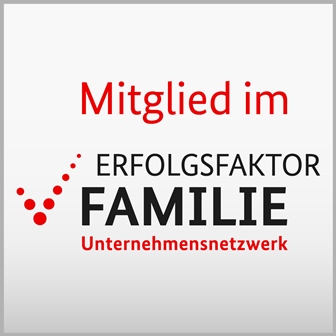 © istockphoto.com/erhui1979
© istockphoto.com/erhui1979
Erscheinung:03.06.2020 Profit versus protection?
Impairment tests for profit transfer agreements are intended to show the long-term viability of loss coverage commitments made by groups towards their insurance subsidiaries. BaFin keeps an eye on such agreements even after the necessary approval – for the benefit of customers and insurers.
The environment in which insurance undertakings operate is currently determined by a difficult economic situation, the coronavirus crisis and low interest rates. In these times, insurers are finding it hard to generate profits with the funds entrusted to them by customers and, at the same time, guarantee the promised interest rates. In particular, this affects insurance undertakings with a large number of policies with long-term guarantees, for example in endowment and annuity insurance. BaFin therefore aims to strengthen the own funds base of the undertakings and avoid capital outflows.
Capital should remain in the company
Since 2011, life insurers have been required to build up an additional interest provision, the Zinszusatzreserve (ZZR), to enable them to meet the higher guarantee obligations from previous years even in times of low interest rates. The build-up of additional provisions means that a smaller surplus remains at the end of the year. As a consequence, the policyholders’ profit participation is also reduced.
If policyholders receive reduced (or no) profit partipations, it would not be fair if the insurance undertaking distributed any profits in full to the shareholders. For this reason, section 139 of the German Insurance Supervision Act (Versicherungsaufsichtsgesetz – VAG) specifies that, during the period in which the ZZR is established, dividends may not be distributed unless the company’s net profit exceeds the amount required to build-up the ZZR.
Definition:Profit transfer agreement
In a profit transfer agreement, a subsidiary undertakes to transfer its profits to its parent company. The parent company, in return, agrees to compensate the subsidiary for any losses that it incurs. The official, more neutral, term is thus "profit and loss transfer agreement". Such an agreement is essentially based on the general provisions of the German Stock Corporation Act (Aktiengesetz – AktG) in addition to specific requirements under insurance supervision law.
Exemptions only if there is a commitment to cover the losses
Contractually agreed profit transfers to the parent company (see info box) are exempted from this statutory restriction on dividend distributions. This is because, in return for the insurer’s obligation to transfer its profits, the parent company undertakes to cover any losses the insurer may incur. The insurer can thus pay out money when times are good and is compensated for losses when times are bad. The protection under such a contractual commitment also applies to insurance customers because they can be certain that their insurer will be rescued by the parent company should it get into difficulties.
Is the commitment viable in the long term?
But what if a loss occurs and the parent company is unable to pay? Especially in difficult economic times, capital outflows from insurance undertakings through profit transfer agreements can only be justified if the parent company's commitment to cover losses is still viable and retains its value. BaFin therefore expects insurers to carefully examine, before entering into a profit transfer agreement, whether their contracting partner would be able to meet its obligation in the event of loss. The findings gained from the relevant impairment test conducted prior to the conclusion of the agreement must be submitted to BaFin, together with the application for approval.
BaFin will only approve profit transfer agreements if there are sufficient advantages to outweigh any potential disadvantages, such as a reduction in the own funds base or interventions in corporate governance. The decisive advantage would be a sufficient probability of loss coverage in the event of a crisis. The parties must contractually agree to subject the profit transfer agreement to a regular impairment test and to submit their findings to BaFin.
BaFin keeps an eye on profit transfer agreements
BaFin expects all insurance undertakings that conclude a profit transfer agreement to continuously monitor the credit quality of their contracting partner. For this purpose, the undertakings concerned should evaluate any information that is publicly accessible or provided by the parent company, such as the annual financial statements and the management report. The key questions are: do the company’s financial position and results of operations show a sufficient degree of probability that it will be able to cover losses? Will the parent company need the help of third parties to cover losses because its only asset is the participation held in the insurance undertaking, which is typical of intermediate holding companies? Are there several agreements with loss compensation obligations within an insurance group which would then require an overall assessment?
Insurers are to assess the risk of the group not meeting its loss compensation obligations as part of their risk management process and take this into account in their own risk and solvency assessment (ORSA). They must report their findings to BaFin, which can then use this information to take further measures, if necessary.
Can the parent company simply terminate the agreement?
If a group wants to end the profit transfer agreement, for example by terminating the agreement, BaFin must give its approval. The legislature recently clarified this by amending section 12 (1) sentence 1 of the VAG. In such a case, BaFin examines whether the interests of the policyholders would be sufficiently safeguarded in the event of termination. The contracting parties must demonstrate to BaFin that discontinuation of the loss coverage commitment will not be detrimental to the policyholders.
Author
Ann Sohns
BaFin Division for National Legislation relating to the Insurance Sector, Insurance Law
Please note
This article reflects the situation at the time of publication and will not be updated subsequently. Please take note of the Standard Terms and Conditions of Use.


